Empowering Seamless Transitions with Holistic Readiness Solutions
Organizations often encounter difficulties when adopting and integrating new technologies, processes, or capabilities, which can lead to resistance, inefficiencies, and failure to achieve desired outcomes. Aptima’s Organizational Readiness capability is designed to ensure that organizations are thoroughly prepared for these changes. This capability involves a comprehensive approach that includes conducting readiness assessments, developing change management strategies, and providing ongoing support to facilitate successful transitions.
Aptima focuses on holistic readiness, addressing preparation at individual, team, and organizational levels. At the individual level, Aptima assesses and prepares each employee by identifying specific training needs, potential resistance points, and personal adaptation strategies. This preparation ensures that each employee understands the changes, knows how to adapt, and is equipped with the necessary skills and knowledge.
At the team level, readiness activities emphasize collaboration, communication, and mutual support within groups. This approach fosters a supportive environment that can effectively manage the challenges of change, ensuring that teams are cohesive and collaborative.
At the organizational level, readiness involves aligning the organizational structure, culture, and strategies with the new changes. This includes conducting organizational assessments, aligning strategic objectives, and adapting policies and practices to support the changes. By ensuring that all levels of the organization are aligned and prepared, Aptima facilitates a smoother transition and more effective implementation of new initiatives, enhancing both workforce and organizational preparedness.
Key Features and Benefits
- Holistic Readiness Assessments: Evaluating readiness at individual, team, and organizational levels to ensure comprehensive preparation.
- Change Management Strategies: Developing and implementing strategies to manage and support the transition process, minimizing disruption and resistance.
- Simulations and Training: Using simulations and targeted training programs to prepare personnel for new technologies, processes, and protocols.
- Continuous Support: Providing ongoing support and resources to facilitate successful adoption and integration of changes.
- Alignment with Organizational Goals: Ensuring that readiness initiatives align with broader organizational objectives and strategic goals.


